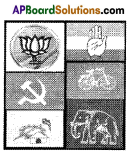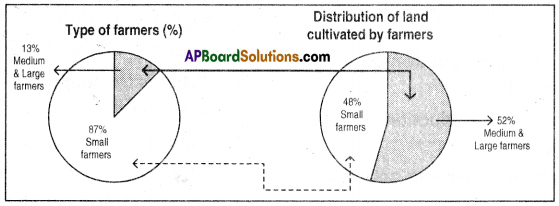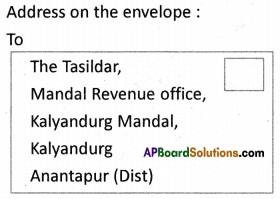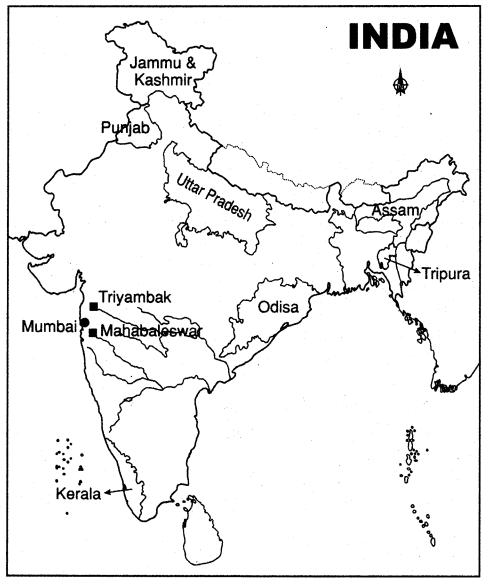SCERT AP Board 8th Class Social Solutions 7th Lesson Money and Banking Textbook Questions and Answers.
AP State Syllabus 8th Class Social Studies Solutions 7th Lesson Money and Banking
8th Class Social Studies 7th Lesson Money and Banking Textbook Questions and Answers
Improve your learning
Question 1.
Fill in the following table with some examples of transactions.
| Transactions involving rupee notes and coins | Transactions not involving rupee notes and coins |
Answer:
| Transactions involving rupee notes and coins | Transactions not involving rupee notes and coins |
| 1) Train journey | 1) Crossing the canal on boat in villages. |
| 2) Purchase of Electricals e.g.: 1. I travel from Khazipet to Hyderabad by paying for a ticket. 2. We purchase a tubelight for Rs. 45. |
2) Purchase of salt and ‘Muggu powder”, e.g.: 1. We pay two bags of paddy to the person who helps us to cross the Godavari in his boat. 2. My grandmother purchases salt and ‘Muggu Powder’ by giving handful of paddy. |
![]()
Question 2.
Can there be any difficulties or disadvantages in keeping money in a bank? Think and write.
Answer:
There will be no problems in keeping money in a bank. But there may be problems due to computers, ATMs and the negligence of employes, e.g.:
- Many problems may arise while withdrawing amount from ATMs.
- Deducting the EMis of loans twice a month by overlook.
- Blocking the accounts.
Question 3.
In what ways have cheques made exchange of money more convenient?
Answer:
Nowadays cheques are widely used for making payments and receiving money. When you want to give money to someone, you write a cheque on that person’s name. When you want to send money to someone who lives in a different place, you can send a cheque to her by post. You can also use your cheque to transfer money electronically into the other person’s account through a bank. For business purposes, where money is frequently received and paid, cheques are very important as a medium for transactions.
Thus cheques have made exchange of money more convenient.
Question 4.
Only a part of the total deposits is kept as cash in the bank-safe. Why is this so and how does this benefit the bank ?
Answer:
Banks keep only a part of the total deposits as cash in the bank of safe. This is so because it helps the daily cash transactions of the bank.
The banks lend the remaining amount to their customers on interest. Thus the banks earn profits.
![]()
Question 5.
If a very large number of account – holders do not wish to keep their money in the bank, how will it affect the bank s working?
Answer:
If a large number of account – holders do not wish to keep their money in the bank.
This affects the reserves of a bank.
The bank cannot lend loans to customers. This affects their income. As a result it is impossible to run a bank.
Question 6.
If many loans are written off (that is, borrowers are not required to pay back the money), how will this affect the working of the bank?
Answer:
A bank is a business enterprise. It has to pay interest to its depositors, pay salary to its employees, has to buy and maintain equipment, pay rent and bear all the cost of running a bank and also make profit.
If the loans are written off, the bank cannot perform all these activities. So the banks cannot write off the loans. In any case if the government writes off the loans, then the government should bear the losses.
Question 7.
People have to pay a higher interest on loans than the interest they receive on a fixed deposit for the same time-period. Why do you think this is so?
Answer:
- Bank trade with money.
- Fixed deposits means money that is to be kept with the bank for agreed and specified period. When one has to disturb this arrangement, he has to pay penalty for the same.
- Hence banks charge more interest on fixed deposit loans than what they give.
- An other important aspect is discouraging loans on fixed deposits.
- Not only that, the banks should reach number of expenses such as payment of salaries to its employees, has to buy and maintain equipments, pay rents and bear all the cost of running a bank and also make profit. That’s why we should pay more interest on loans.
![]()
Question 8.
Suppose this year the rains are poor and the crop yield is only half as much as was originally expected. Some people say that if this happens the farmers should be asked to pay back only half the amount they have taken as loans. However, other people say that full amount should be repaid, keeping in view the next year’s crop. In your opinion, what should the bank do and why?
Answer:
- Whatever the situation, normally banks ask for full payment of loan.
- When there is a crop failure or less yield, farmers are unable to repay their loans.
- In such situation banks have to reschedule the repayment procedure and has to provide crop loans to the farmers for the next season.
- Government shall support the farmers by waiving interest component and directing the banks to provided necessary loans for next crop.
Question 9.
Read the Paragraph under the header ‘Types of Loans’ and answer the following question:
Types of Loans
Banks give loans and advances to different sections of the public like traders, industrialists, students (educational loans), farmers, artisans, SHG, etc. Let us examine some of them.
“What sort of loans are more common in your area?”
Answer:
- Crop loans
- Housing loans
- SHG loans
![]()
Question 10.
Do you feel that the loans taken from SHGs are helpful to the members? How?
Answer:
These are very useful to them.
- They need not ensure the bank with securities.
- The group will ensure that loans are paid back by its members.
- Interest is also nominal.
- The loan can be repaid in easy monthly installments.
8th Class Social Studies 7th Lesson Money and Banking InText Questions and Answers
Question 1.
Are you aware of any exchanges that are done without money?
Answer:
I know about Barter System. In this system goods are directly exchanged for each other without the use of money.
Question 2.
You may have bought things in exchange of old clothes, plastic, newspapers, hair, paddy, etc. Discuss the transaction. (Textbook Page No. 77)
Answer:
- Old clothes : We usually exchange old clothes with steel utensils. This depends mostly on the seller.
- Plastic and Newspapers : We usually exchange these with onion traders. He gives 11/2 kg onions for 1 kg plastic or newspaper.
- Hair: They offer money for hair.
- Paddy: In our village paddy is exchanged for services rendered by washerman, barber etc.
![]()
Question 3.
Complete the following table:
a)
| Gopal | Seenu | Ramu | |
| Wishes to buy | |||
| Wishes to sell |
b) What can we conclude from the above table?
(Textbook Page No. 78)
Answer:
a)
| Gopal | Seenu | Ramu | |
| Wishes to buy | rice | goat | wheat |
| Wishes to sell | goat | wheat | rice |
b)
- Trading between these three people is impossible.
- Gopal needs rice. Srinu does not need goat.
- Money helps this transaction.
Question 4.
Explain in your own words why exchange is not possible between Gopal and Seenu. (Textbook Page No. 78)
Answer:
Gopal needs rice. Seenu has rice. But he doesn’t need goat. He needs wheat. So the transaction between Gopal and Srinu is not possible.
![]()
Question 5.
a) Will the use of money help? Fill in the blanks. (Textbook Page No. 78)
Answer:
The use of money helps this type of transaction.
b) If Gopal exchanges for money, his goat with —–(i)—– then Gopal uses this —–(ii)—– to buy rice from —–(iii)—– Now —–(iv)—– can use this money to buy —–(v)—– from Seenu.
Answer:
i) Seenu
ii) money
iii) Ramu
iv) Ramu
v) wheat
Question 6.
Ask your parents how washermen, barbers, neeti kaavalikaru were paid for their work in villages and towns. (Textbook Page No. 78)
Answer:
Nowadays they are paid money only. But 15 years back our parents paid them in the form of paddy.
Question 7.
How can money be used in the transactions between Gopal, Seenu and Ramu ?
Explain with the help of a flow chart. (Textbook Page No. 78)
Answer:
Gopal should sell his goat for money.
↓
He should purchase rice with that.
↓
Seenu should sell wheat for money.
↓
He should purchase goat with that.
↓
Ramu should sell rice for money.
↓
He should purchase wheat with that.
![]()
Question 8.
If the role of money as described above were stated as a medium of exchange, would you agree? Explain. (Textbook Page No. 78)
Answer:
Yes, I agree with the above statement. In the barter system the calculation of valuation is not logical and scientific. So I agree with this.
Question 9.
For how much rice should Gopal exchange his goat? (Textbook Page No. 78)
Answer:
This depends on the demand of goat. If the demand is high, the rice should be in the quantity demanded by Gopal. Otherwise he should accept the offer of the seller.
Question 10.
In a barter system how do you pay to a person who cuts your hair? Discuss. (Textbook Page No. 79)
Answer:
In barter system I give one kg of rice to the person who cuts my hair. At present the price of one kg of rice is Rs.30/-. The rate of hair cut is also equal to it.
![]()
Question 11.
In the above example, complete the conversation, so that they are able to trade. (Textbook Page No. 79)
Gopal: How many bags of rice will you give for this goat?
Seetaiah: Two bags.
Gopal: I was offered 4 bags for it in other village.
Seetaiah: And I can get a goat for just one bag in that village.
Gopal: ……………………………………..
Seetaiah: …………………………………….
Answer:
Gopal: I can give this at least for 3 bags.
Seetaiah: Okay. Take it.
Question 12.
If money was not used by you or any of the traders in your santhalu or weekly market what would happen? Describe in a paragraph. (Textbook Page No. 79)
Answer:
Nowadays money is mostly used as medium of exchange. No one can decide the value of the commodities. Employees and other workers have money only for exchange. The conditiion is unpredictable.
Question 13.
Do you think money can act as a measure of value of goods and services? Explain.
(Textbook Page No. 79)
Answer:
Yes, money can act as a measure of value of goods and services. Public services and private services can be measured. But we cannot and should not measure the values of services of our parents and blood relations.
e.g.: Public Services : Transportation – APSRTC
Medical facilities – Government hospitals.
Private Services : Transportation – Private buses
Medical facilities – Private hospitals
![]()
Question 14.
Can you think of situations when this trust of the goldsmith could break? (Textbook Page No. 82)
Answer:
The trust of the goldsmith could break in the following situations:
- debasing the coins
- maintaining difference in the quality of coins
- fail to give the coins whenever they asked
- and any action of cheating
Question 15.
What was the problem faced by the traders in Amsterdam and how did they find a way out? (Textbook Page No. 82)
Answer:
Amsterdam was a major trading centre in Europe. Here, there were 846 silver and gold coins recognised by the government that could be accepted for exchange. However, traders were always suspicious of each other – everyone would doubt the purity and weight of these coins. The merchants of Amsterdam got together and solved this problem in a unique manner. They created a bank owned by the city.
![]()
Question 16.
Draw the picture of a bank cheque in your notebook and pay Rs.1,50,000/- to your friend sitting next to you. (Textbook Page No. 84)
Answer:
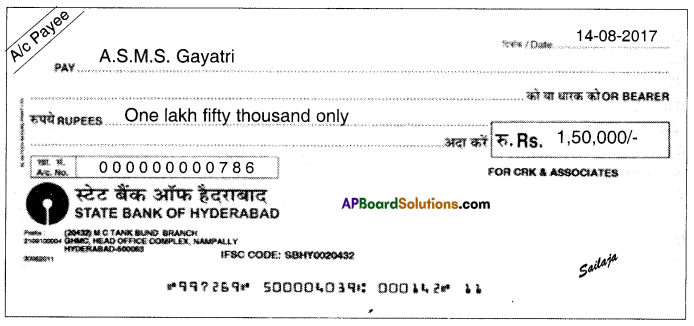
Question 17.
a) If Suresh Babu wants to deposit 1,75,000, electronically into Kancharla Sujatha’s account through his bank, how can this be done ?
b) What more information would he require ? Visit a bank and find out. (Textbook Page No. 84)
Answer:
a) This can be done through NEF transfers. According to this process any account holder can transfer to another account holder of any other bank in the country without any charges. The maximum limit is Rs.2,00,000.
b) For this she needs the account number, name of the receiver, branch name and city of Sujatha.
![]()
Question 18.
Discuss and make a list of the payments that people make electronically without using a cheque. (Textbook Page No. 84)
Answer:
People can make payments electronically without using cheques by using internet.
- Sale and purchase of goods
- Raising capitals
- Repaying debts
- Paying electricity and Phone bills
- Transfer of money
- Paying income tax
- Paying house taxes etc.
Question 19.
What is the difference between a savings account and a current account? (Textbook Page No. 84)
Answer:
Savings account: The savings account holders are mostly employees and common people. They get interest on their amount in the account. Money wil be safe. The account holder can withdraw it at any time he/she wants. The bank promises to pay on demand. Current Account : Business people and traders maintain this account. There are no restrictions on the number of times you can deposit or withdraw the money from a current account. Transactions can be made by way of cheque. The bank does not pay any interest on money deposited in a current account but will collect service charges.
![]()
Question 20.
Match the statement in column A with the word(s) / terms in column B. (Textbook Page No. 86)

Answer:
a-iv, b-i, c-v, d-ii, e-iii
Question 21.
When should one opt fixed deposits for savings? (Textbook Page No. 86)
Answer:
The money invested in fixed deposits should not be withdrawn in the given period. Then only one can use fixed deposits for savings.
Question 22.
How is an SHG loan different from an individual loan? (Textbook Page No. 88)
Answer:
One should mortgage one’s property when he/she takes individual loan. The SHG will ensure that loans are paid back by its members. They need not mortgage any asset.
![]()
Question 23.
a) Hari cultivates vegetables like tomatoes, okra, green leaves etc. He wants to buy fertiliser after three months. He can’t keep these vegetables with him to pay for the fertiliser after three months. If he does not use money what arrangement will he get into with the person supplying fertilisers?
b) Do you find any such arrangements in villages around you?
c) Many a times farmers may not benefit from such arrangements. Discuss. (Textbook Page No. 79)
Answer:
a) Hari should sell his vegetables to the trader of fertilisers. Then in future he can get the fertilisers for the same rate. Thus they should enter into an agreement.
b) We have no such arrangements in our village.
c) These arrangements are beneficial to the farmers. Values differ in different seasons. So government should plan the substitutes.
Question 24.
Have you ever been inside a bank? What are the names of some banks you know? (Textbook Page No. 82)
Answer:
Yes. I have visited the banks many times.
Names of Banks:
- Kotak Mahindra
- State Bank of India
- Andhra Bank
- Indian Bank
- Vijaya Bank
- Dena Bank
- Kanakadurga Grameena Bank
![]()
Question 25.
If you step inside a Bank, you will find some employees sitting at different counters with their computers/ ledgers and dealing with the customers. You can also observe people depositing money at some counters and withdrawing money at other counters. There is one cabin where the manager sits. What do these bank employees do? (Textbook Page No. 82)
Answer:
My name is Subba Rao. Once I went to the State Bank of India branch in Mudinepalli One gentleman sat inside a cabin. There is a name plate before him.
ANASINGARAJU VENKATA CHALAPATHI RAO – B.M.
He was going through some documents and discussing with some others. My mother came there to withdraw some amount. She filled up the withdrawal form and handed over it to the person in counter no. 2. The person in the counter verified the form and the book. He signed it and gave us a token no. 4. We waited there for sometime. In the meanwhile one known person Sri K. Yagnaiah came there and deposited some amount. He wished my mother and went away. Rama Krishna, my brother’s friend, came to the bank to open a new account. He was enquiring about it. Bank people were drafting D.D.s, verifying accounts, opening new accounts and helping the locker holders etc. After 40 minutes there was a call from No. 6 counter. We went to the counter and took our money. I was told by my mother that the Manager looks after the bank management issues and any other problems.
Question 26.
Read the promise on paper notes used today. Who is making the promise and to whom? Why is this important? Discuss. (Textbook Page No. 82)
Answer:
I find the following promise on the hundred rupee note.
“I PROMISE TO PAY THE BEARER THE SUM ON ONE HUNDRED RUPEES.”
– GOVERNOR.
This promise is given by the Reserve Bank Governor, Dr. Raghuram Rajan. This promise is given to the owner of the note. Without this promise this note can be treated as a paper. So this is important.
![]()
Question 27.
Visit a commercial bank which is near to your locality and fill up the following table. (Textbook Page No. 88)
| S.No. | Type of loan | Loan amount | Duration of loan | Documents required | Interest rate | Mode of payment | Security, if any |
| 1. | Vehicle | ||||||
| 2. | |||||||
| 3. |
Answer:
| S.No. | Type of loan | Loan amount | Duration of loan | Documents required | Interest rate | Mode of payment | Security, if any |
| 1. | Vehicle | 6,00,000 | 84 months | 1) Six months bank statement etc. 2) 2 photos |
10.50% p.a. | Monthly EMI | |
| 2. | Housing Loan | 15,00,000 | 15 years | 1) IT Pancard Address proof | 10% p.a. | “ | Government employee’s signature or any other security |
| 3. | Education loan | 4,00,000 | 3 years | “ | 13.50% p.a. | After getting job or 6 months after completion of the education | Signature of a government official or any other security |
Question 28.
Why were metals preferred for use as money? (Textbook Page No. 80)
Answer:
Copper, bronze, silver and gold are durable, can be divided into parts and be carried around Since they were scarce they became acceptable by all. So the metals were preferred for use as money.
![]()
Question 29.
Do you think minting of coins was a good idea? (Textbook Page No. 80)
Answer:
Yes, I think so. But the quality and measurement should be perfect as per norms.
Question 30.
In what ways would minting of coins benefit the rulers? Can you think of three different reasons? (Textbook Page No. 80)
Answer:
- The trade transactions in their kingdom will be perfect. This strengthens their treasury.
- Minting coins is an industry. The income through this also strengthens their treasury.
- They print their favourite designs on the coins. This act enables the future generation to know about the interest of the past people.
Eg. : If we find any musical instrument on the coin, it tells us that they were the lovers of music.
Question 31.
Why do the receipts of the goldsmith work as money? (Textbook Page No. 82)
Answer:
The goldsmiths charged fees for keeping their valuables safe and making them available whenever they wanted. This practice became popular and the trust in some of the goldsmiths or shroffs grew. These goldsmiths would also give loans and had branches in many cities leading to a new system of paper money or hundis. With the great confidence on the goldsmiths, the people treated the receipts as money.
![]()
Question 32.
Why is a crossed cheque safe? Discuss. (Textbook Page No. 84)
Answer:
The crossed cheque can be deposited and cashed in the account holder’s account only. No other person can cash it. This system can create confidence in the customers. Otherwise it can be misused.
Question 33.
Why do banks ask for security while lending? (Textbook Page No. 88)
Answer:
There is no personal relation and identification between the bank people and their customers. If the bank people failed to recollect the debts, it leads to bankrupt. So banks ask for security while lending.
Question 34.
Which is a better source of loans — banks or money lenders? Why? (Textbook Page No. 88)
Answer:
Banks are a better source of loans.
Reasons:
- The Bank interest is nominal.
- The loan can be paid in easy instalments.
- If any customer fails to repay, the bank gives reasonable time for the repayment.
Question 35.
After two centuries, this bank collapsed. Can you guess what could have been the reasons for this? Discuss. (Textbook Page No. 82)
Answer:
Amsterdam Bank opened many branches in many European countries. It was called ‘Wissel Bank’ in Dutch. There was debasement problem in Dutch. It was often. Due to that the customers of the Bank usually repaid the coins of lesser values. So the customers were dissatisfied. As Dutch was a small country, the problem raises many times. Due to this the name of the bank was defamed.
The decline of the Bank accelerated with the fourth Anglo-Dutch war (1780-84). The British blockade of Holland and the capture of many Asian colonies put tremendous pressure on the Dutch East India Company. Loans were issued to all. The metallic stock of the bank was dropped from 20 million to 6 millions (1780-84). The French revolution led the bank towards failure. At last it was closed in 1819.
![]()
Question 36.
How would she (Geeta) withdraw the money from an ATM? (Textbook Page No. 82)
Answer:
1) Geeta would follow the instructions displayed on the screen of the ATM.

Instructions :
a) Insert the card/Remove the card
b) Feed the PIN number
c) Feed the amount, press ok
d) Take the money
e) Take the receipt
f) Press the ‘Clear’ Button
g) Leave the room
2) By following the given instructions Geetha would withdraw the money from an ATM.
Question 37.
What would she (Geeta) do if she went to her bank branch? (Textbook Page No. 82)
Answer:
She would stand in a queue for 30 to 40 minutes to get the amount. She had to fill the withdrawal slip and stand in the queue. When her turn comes she gives the slip and passbook in the counter. Then she gets token. After a few minutes she will be paid in another counter.
Question 38.
How much money will Manaswini get from her Fixed Deposit till five years, if the rate of interest is 8%? (Textbook Page No. 86)
Answer:
Manaswini gets Rs. 15000/- approximately after the period of 5 years.
![]()
Question 39.
Suppose she needs the money urgently for some medical treatment. Can she withdraw it from the Fixed Deposit at the bank? What will happen? (Textbook Page No. 86)
Answer:
She can withdraw her deposit whenever she wants. But she will not receive 8% of interest. She receives less percentage as per bank norms.
Question 40.
Will the same rate of interest be charged for all types of borrowers from a bank? (Textbook Page No. 87)
Answer:
The rate of interest changes from loan to loan.
For e.g.: They charge 8% on housing loans and 14% on personal loans.
Question 41.
What will happen if some borrowers do not repay the bank loan? (Textbook Page No. 87)
Answer:
The bank collects the loan from the guarantors or disposes the mortgage.
For e.g.: If any customer fails to repay the housing loan, the bank sells the house in auction. It takes the loan amount and gives the remaining amount to the customer.
Classroom Activity
Suppose you need Rs. 2,000. You fill a cheque and give it to your sister and send her to get the money in cash.
Answer:
Self cheque:
- I will write a cheque for Rs. 2,000/- on my friend’s name and ask her to get cash from the bank.
- I will sign on the down and back of the cheque.
- I will give her instructions where to handover the cheque in the bank and how to receive cash in counter.
- No need of any account to my friend in the bank.
Cross cheque: If I wrote an amount on cross cheque, my sister needs an account in any of the banks to change the check into cash.
![]()
Project
Question 1.
Visit a bank or invite a bank employee to the school and find out:
a) How to open a saving account in your name?
b) How are cheques cleared by the banks?
c) How do banks make NEFTransfers? (National Electronic Funds Transfer)
d) What security precautions are necessary for an ATM to work? What does the computer check?
e) Apart from cheques, people can also exchange money through Bank Drafts/online transaction etc. Find out.
f) For the person receiving the money, what is the advantage of online transaction compared to a cheque?
g)
| The following Interest rates on saving deposit. | |
| Interest rate on fixed deposit | |
| Interest rate for loans given to farmers | |
| Interest rate for loan given to housing | |
| Interest rate for loans given for education |
Answer:
a) The person should take two photographs, address proof, income proof, personal identifi¬cation to the bank. He/she should fill the application form and get the introduction signa¬ture. He/she should handover these papers in the counter, his/her account can be opened.
b) Cheques are cleared by the banks in the Clearing Bank.
c) All the banks in the country are interconnected with computers and internet. A person can transfer a particular amount (less than 2,00,000/-) from his account to others account in other bank. This transaction can be done through NEFT. The Bank will not charge any rate for this.
d) Security precautions necessary, for an ATM to work :
- Computer should be checked whether working properly or not.
- Receipt system and printer should be checked.
- The machine should understand the orders of the user.
- The count of notes should be proper.
- There must be a watchman.
- A camera should be fixed in the ATM room.
- In addition to the PIN number, a system should be improved which records the thumb prints. Computer checks the PIN number and balances in the accounts.
e) Yes, there are bank drafts and online transactions etc., to exchange money.
Drafts take sometime to be encashed. But online transactions take no time. One can withdraw the amount immediately after a click.
f) When compared to a cheque, online transaction is the best. The person can receive the money without any delay. But a cheque takes 2 to 4 days time to be encashed. So the receiver can save his time.
g)
| Interest rate on savings deposit | 4% |
| Interest rate on fixed deposit | 1 year – 8.50%. 3 to 6 months: 6.50% |
| Interest rate for loans given to farmers | I year 8% II year – 9% |
| Interest rate for loan given to housing | 10 .50% |
| Interest rate for loans given to education | 13.50% – 14% |
Question 2.
Please visit www.rbi.org.in and read comics on financial inclusion / financial literacy themes.
Answer:
Student Activity.
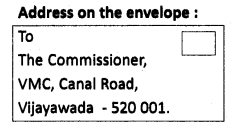
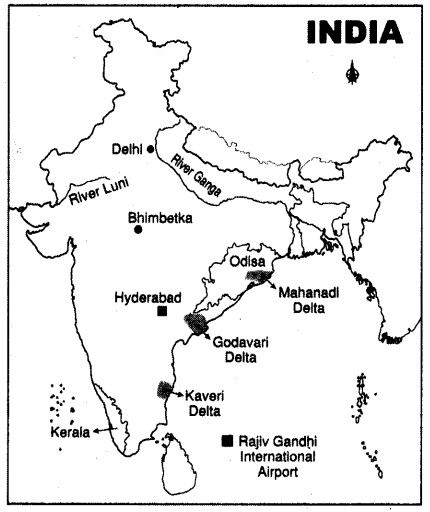
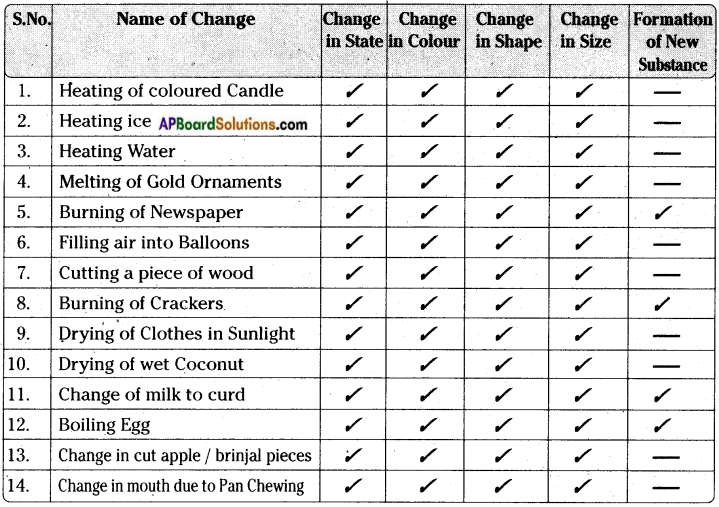
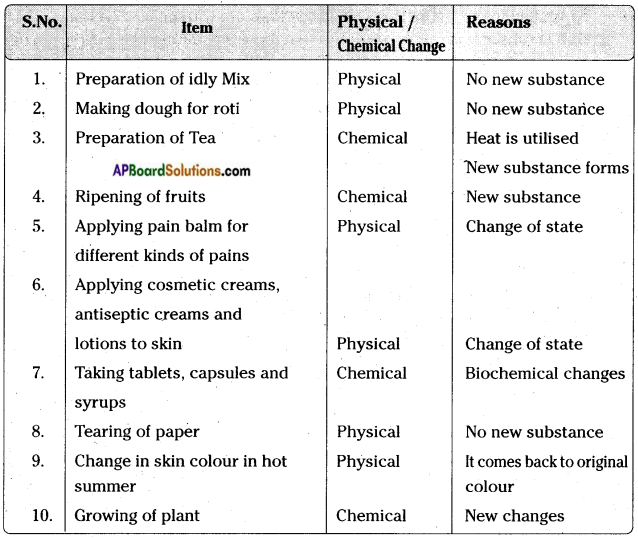

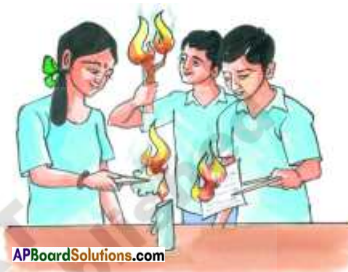
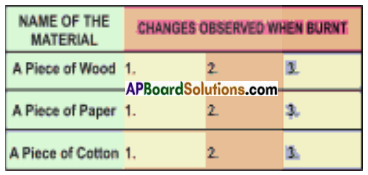




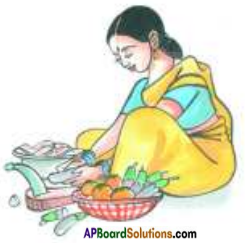







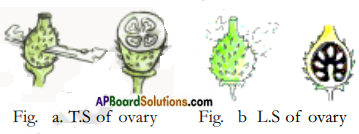


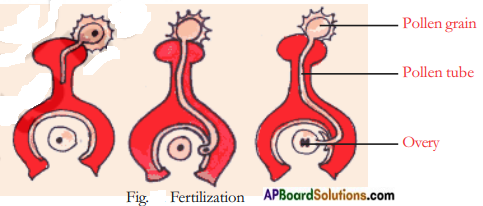






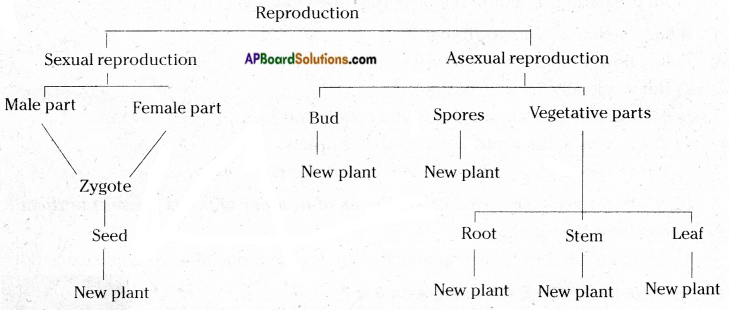
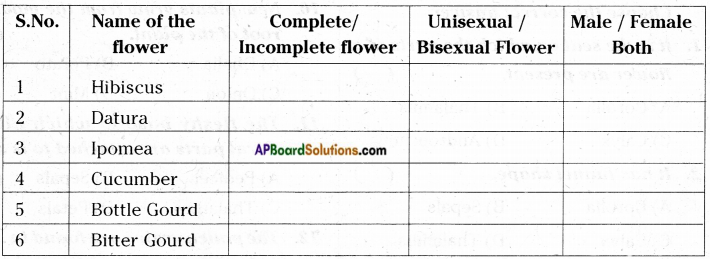
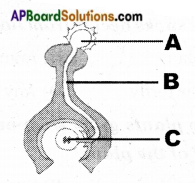
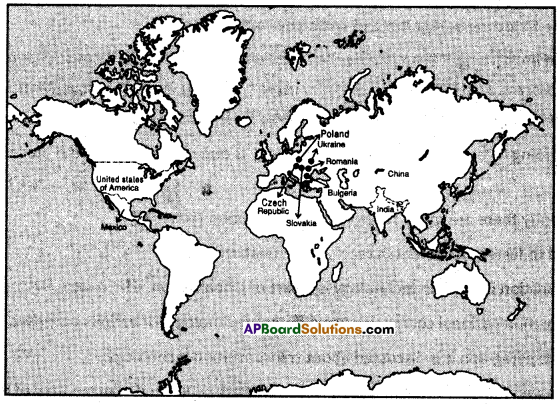
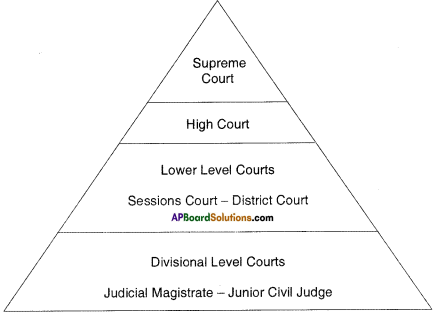
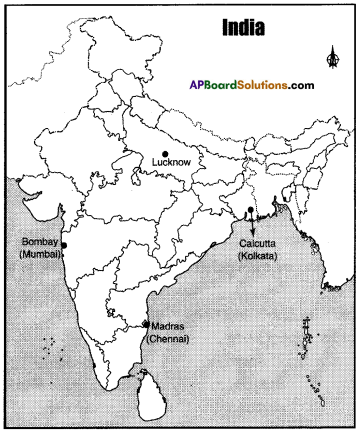

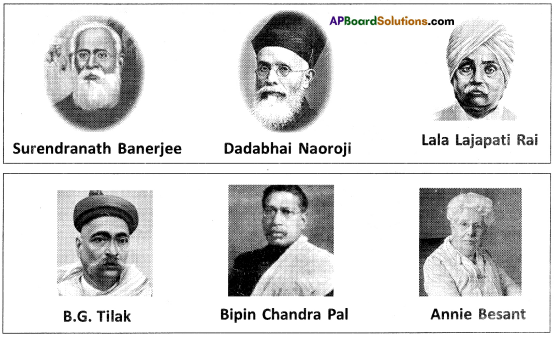 Answer:
Answer: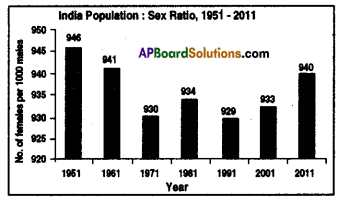
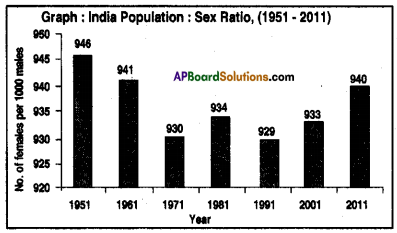 a) In which year, the highest sex-ratio was recorded?
a) In which year, the highest sex-ratio was recorded?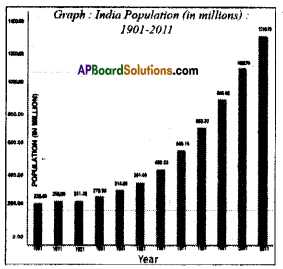 Answer:
Answer: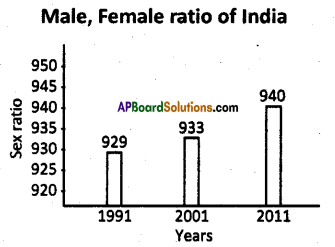 Answer:
Answer: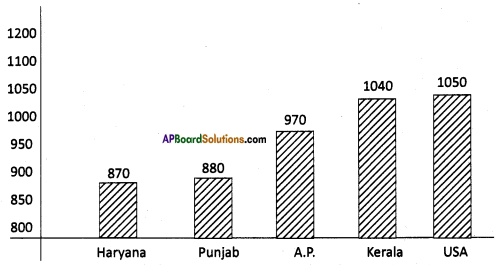

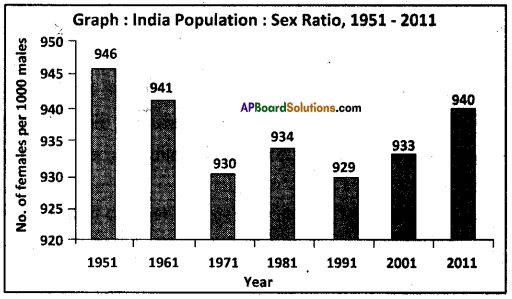
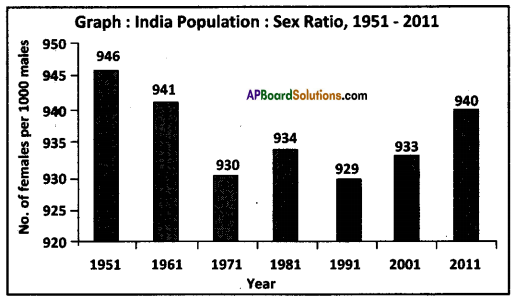
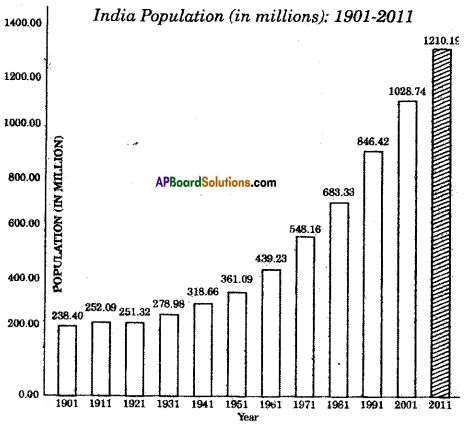
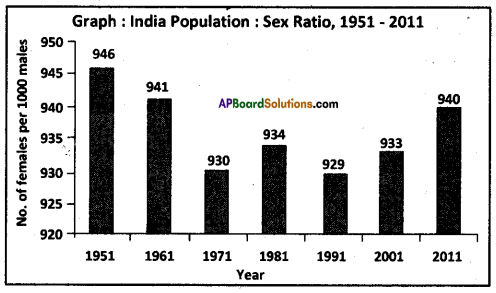 Now answer the following questions.
Now answer the following questions. a) What are group in India has the largest percentage of people?
a) What are group in India has the largest percentage of people?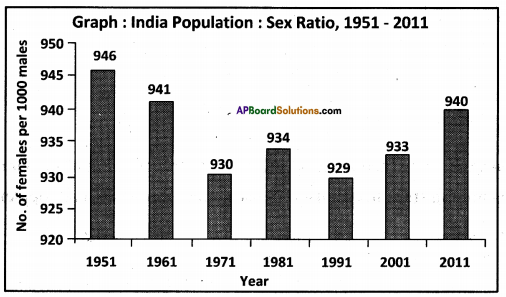 Now answer the following questions.
Now answer the following questions.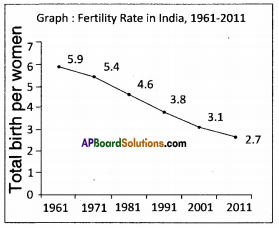 Answer:
Answer: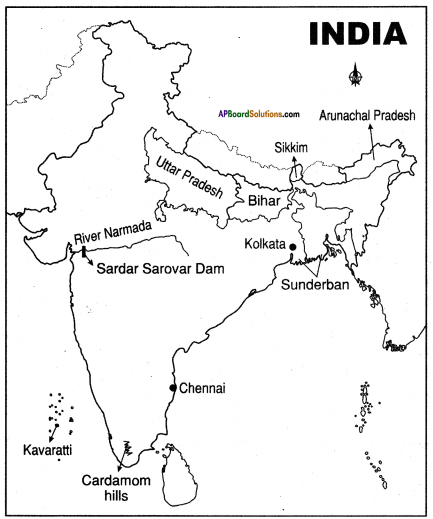
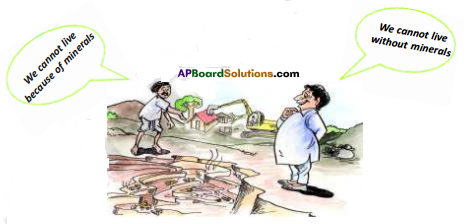 Answer:
Answer: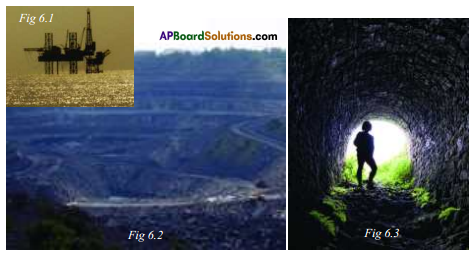


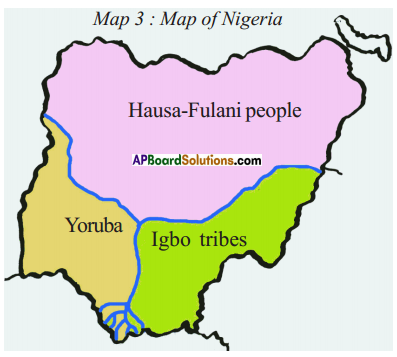 How were the British able to implement their ‘divide and rule’ policy in Nigeria?
How were the British able to implement their ‘divide and rule’ policy in Nigeria?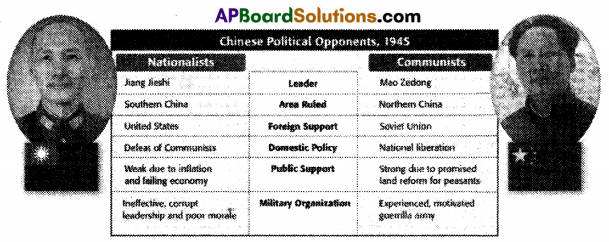 Which aspect of the Communist approach do you think led to Mao’s victory? Explain.
Which aspect of the Communist approach do you think led to Mao’s victory? Explain. a) Which nation was ruled by the Manchu Dynasty?
a) Which nation was ruled by the Manchu Dynasty?

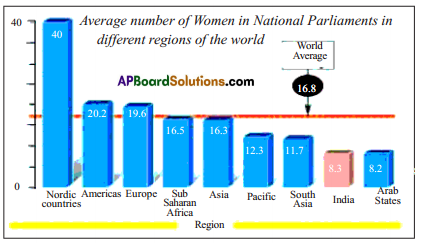 Based on the above information write an essay analysing the following aspects:
Based on the above information write an essay analysing the following aspects: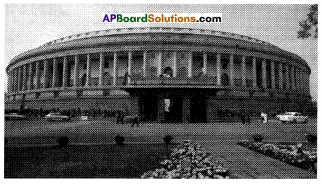
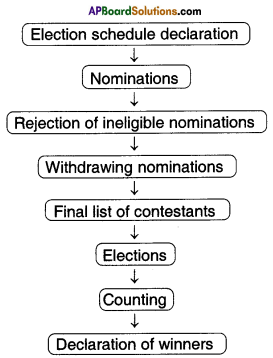
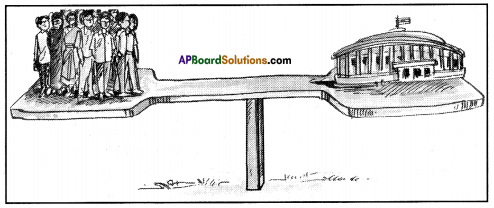 Answer:
Answer: